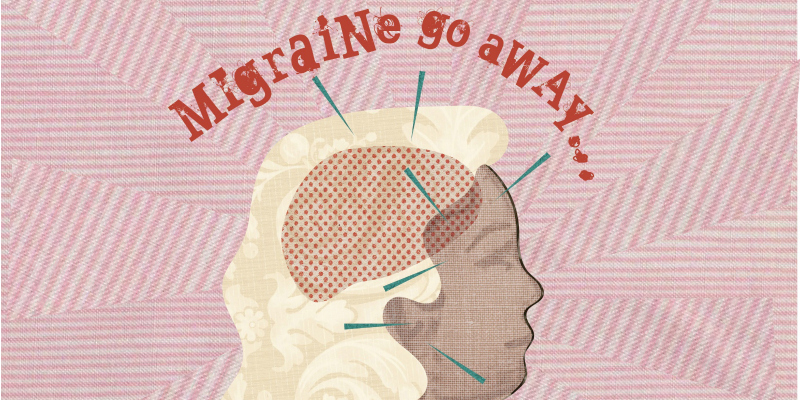By Annie Rosemurgy | Illustrated By Ann Christianson
Those unlucky enough to be familiar with migraines know they are more than a simple headache. Thus, they don’t usually respond to standard over-the-counter treatments. Prescription medications have come a long way in the past two decades but don’t work well enough for some and aren’t appropriate for others. On the bright side? There are many effective, non-drug solutions available, with more available every year.
Dr. Susan Seeger of UW Health’s Headache Clinic strongly advises anyone coping with chronic headaches to begin by taking a long, hard look at lifestyle. First, she says, examine “headache hygiene”—issues such as sleep schedule, caffeine intake, sugar consumption, and, for women, the relationship of migraines to the menstrual cycle. She encourages patients to keep a detailed, daily “headache journal.” Patients are often surprised by how minor tweaks to lifestyle can produce major results in symptom management.
Once lifestyle is accounted for, the hunt for effective treatment begins. While prescription medications target the brain itself, some complementary therapies focus on nerves and muscles as critical cogs in migraine’s feedback loop. Acupuncture, a practice originating in ancient China, is a “life- saver” for many chronic sufferers, says Seeger. Baiyan Zhou of Madison Acupuncture and Herb Clinic explains that when pathways in the body, or meridians, are blocked, the lifeforce, “chi,” can’t flow freely. Illness, including migraines, results. She inserts fine needles at particular points, opening the meridians and relieving the pain. Zhou emphasizes that managing migraines through acupuncture is an individual process. “As patients proceed with treatment, they learn how frequently they need to come in to stay healthy.”
Dry-needling is a “close cousin” to acupuncture, according to Seeger. Here, doctors locate areas of tension in the head and neck and use larger needles to “mechanically break up the knots,” she explains.
When doctors began using Botox—the infamous anti-aging “wrinkle shots”— patients reported that their headaches disappeared, too. FDA-approved for migraines in 2010, UW plastic surgeon Dr. Ahmed Afifi uses Botox in a low-risk surgical procedure to “turn off the migraine switch” in 80 percent of tough cases. “The patients who see me are at the end of a long road. Allowing patients to enjoy the simple things in life again” is Afifi’s mission. “If a patient reports to me that after surgery they were able to enjoy three hours of their daughter’s birthday party, this is what keeps me going.”
Seeger estimates that 90 percent of patients will be effectively treated through some combination of medication, lifestyle adjustments and complementary therapies. But for the most stub- born cases, UW pain specialist Dr. Alaa Abd-Elsayed has pioneered the “radio- frequency ablation” procedure. “We basically damage the nerve that transmits the pain signals to the brain,” he says. Nerve function is maintained, “only the pain is blocked.” While the idea of “migraine surgery” may be disconcerting, Abd-Elsayed reports that his patients are surprised to learn the procedure is non-invasive, hospital time is minimal and recovery is relatively easy.



